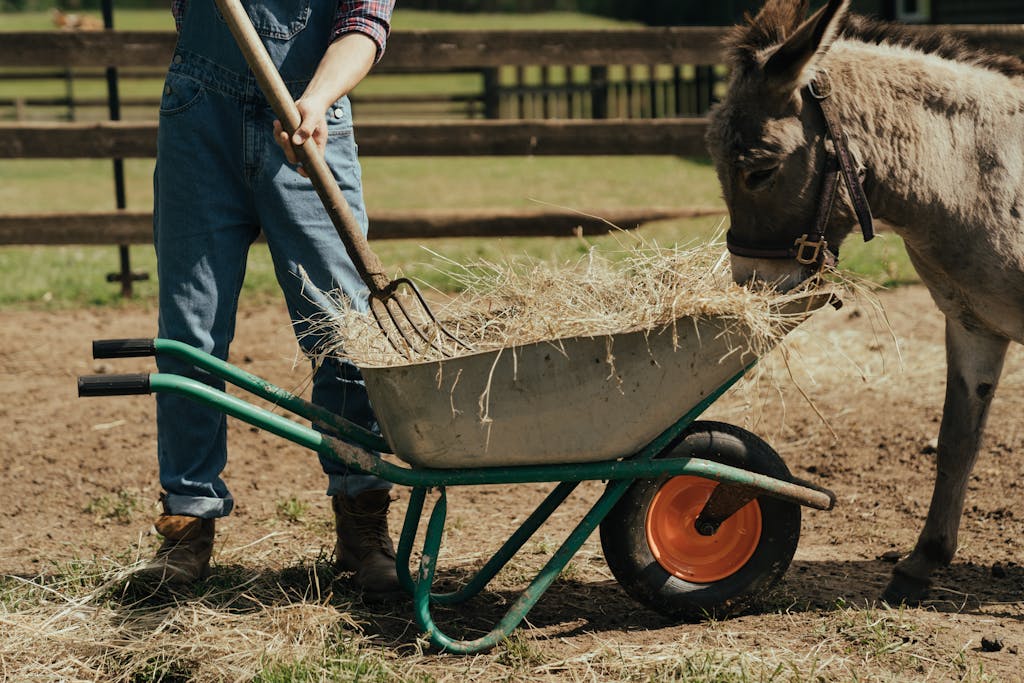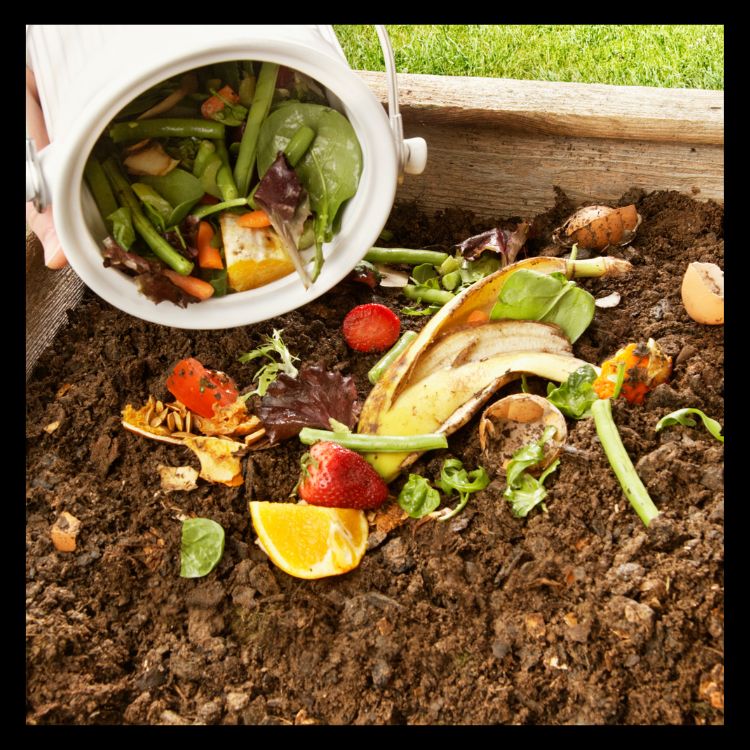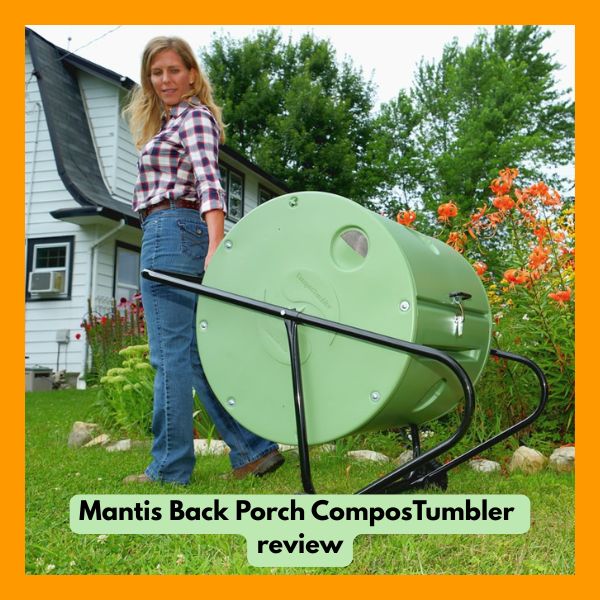A Fun, Easy Guide to Growing Juicy Tomatoes
Hey there, tomato lovers! If you are wondering How to Make the Best Compost for Tomatoes bursting with flavor right from your backyard, you’re in the right place.
I’m here to share my passion for creating the perfect compost to make your tomato plants thrive.
Learning how to make the best compost for tomatoes isn’t just about tossing scraps in a pile—it’s like cooking up a nutrient-packed smoothie for your plants.
And trust me, it’s easier than you think! Plus, I’ll sprinkle in some simple science to make it fun, recommend some handy products, and show you how growing your own tomatoes can save you money.
Let’s dig in!
Why Compost Matters for Tomatoes
Tomatoes are like the rock stars of the veggie world—they need a lot of energy to perform. That energy comes from nutrient-rich soil, and compost is the secret sauce.
Think of compost as a superfood for your plants. It’s packed with stuff like nitrogen, phosphorus, and potassium—kinda like the vitamins in your breakfast cereal.
These nutrients help tomatoes grow strong stems, lush leaves, and those delicious fruits we all love.
But it’s not just about food. Compost also makes soil fluffy, so roots can spread out easily, and it holds just the right amount of water—not too soggy, not too dry.
For a young gardener, picture it like giving your plants a cozy bed with a built-in snack bar. Cool, right?
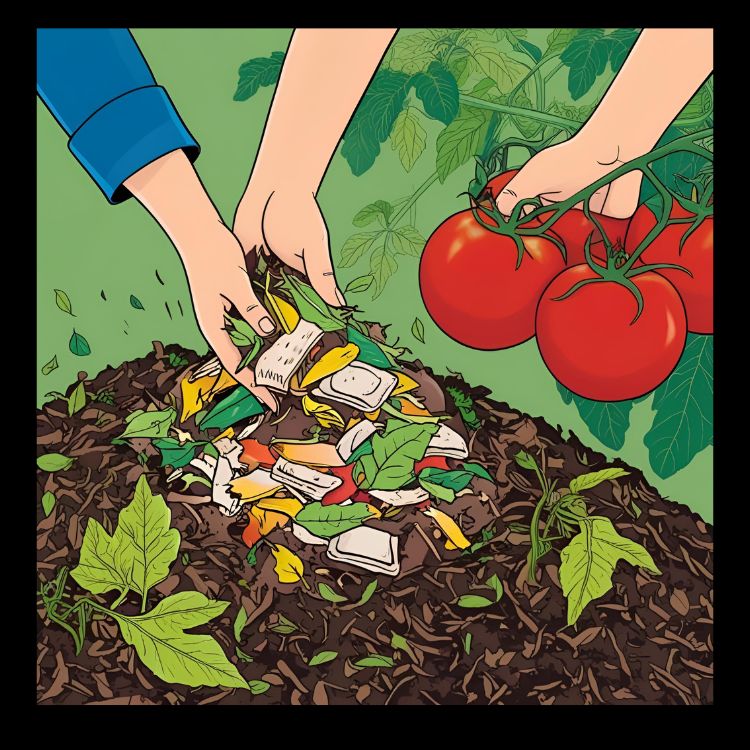
Step-by-Step: How to Make the Best Compost for Tomatoes
Ready to get your hands dirty? Here’s my go-to method for whipping up awesome compost that’ll have your tomatoes singing.
I’ve broken it down so it’s super easy to follow, even if you’re new to this.
Step 1: Pick a Composter
First, you need a spot for your compost magic to happen. I love using a composter bin because it keeps things tidy and speeds up the process.
My top pick is the 300L Garden Composter Bin from Compost Charm. It’s roomy enough for a family’s scraps, eco-friendly, and has great airflow to help stuff break down fast.
It costs about $100 or so, which is a steal for something that’ll last years. Check it out as the prices can vary. The thing you have to remember is, it will be a great investment.
Tip: Place your bin in a shady spot. Too much sun can dry it out, and too much rain can make it a soggy mess.
Step 2: Gather Your Ingredients
Compost is like a recipe, and you need two main types of ingredients: greens and browns.
- Greens: These are nitrogen-rich things like veggie peels, grass clippings, or coffee grounds. They’re the “wet” stuff that gives your compost energy. Got leftover salad? Toss it in!
- Browns: These are carbon-rich, dry things like leaves, cardboard, or straw. They keep the pile airy and stop it from getting smelly.
Simple Science Alert: Nitrogen is like the gas pedal—it makes things break down fast. Carbon is the brakes, keeping it balanced.
Aim for a mix of about 1 part greens to 3 parts browns. For a kid, think of it like mixing one scoop of ice cream (greens) with three scoops of cereal (browns).
Cost: Most of this stuff is free! You’re using kitchen scraps and yard waste. If you need to buy straw or cardboard, expect to spend maybe £5-£10 a year.

Step 3: Layer It Up
Start with a layer of browns at the bottom of your Compost Charm 300L Bin—about 6 inches thick. Add a thin layer of greens on top.
Keep alternating like a lasagna. This layering helps air flow through, which is key to avoiding a stinky pile.
Hint: Chop big stuff like banana peels or branches into smaller pieces. It’s like cutting your food into bite-sized chunks—it breaks down faster.
Step 4: Give It a Stir
Every week or two, grab a pitchfork or shovel and mix your pile. This adds oxygen, which is like giving your compost a big gulp of air to breathe.
If you’re using a tumbler-style composter, just give it a spin.
Kids can help with this—it’s like stirring a giant soup!
Science Bit: Tiny microbes (like mini chefs) in the pile eat the scraps and turn them into compost. Oxygen keeps them happy and working hard.
Product Rec: A sturdy garden fork costs around $20+ and makes turning easy. I like the ones from Wilkinson Sword—they’re tough and comfy to hold.
Step 5: Keep It Moist
Your compost should feel like a wrung-out sponge—not too wet, not too dry. If it’s too dry, sprinkle some water. Too wet?
Add more browns. In the UK, rain can make things soggy, so cover your bin if needed.
Step 6: Wait for the Magic
Compost takes about 2-3 months to turn into dark, crumbly goodness. You’ll know it’s ready when it smells earthy (like a forest floor) and you can’t tell what the original scraps were.
Patience is key, but it’s so worth it!
Cost: Total setup cost is about $120 (bin + tools), but after that, it’s basically free. Compare that to buying compost at $12+ per bag, and you’re saving big time.
Using Your Compost for Tomatoes
Once you’ve got your compost, it’s time to feed those tomatoes! Here’s how:
- In the Ground: Mix a few handfuls of compost into the top 6 inches of soil before planting. It’s like giving your plants a nutrient boost right at the start.
- In Pots: Blend 1 part compost with 1 part potting soil for containers. Tomatoes in pots love this mix because it holds water but drains well.
- Mulch It: Spread a thin layer of compost around your plants during the season. It’s like a slow-release energy drink for them.
Hint: Don’t use pure compost—it’s too rich and can burn young plants. Always mix it with soil.
Which Compost Is Best for Growing Tomatoes?
When it comes to picking the best compost for tomatoes, you want something that’s nutrient-packed, well-draining, and slightly acidic.
Homemade compost is my favorite because you control what goes in, making it super rich in stuff like nitrogen for leafy growth and potassium for juicy fruits.
It’s also free and eco-friendly! If you’re buying, look for organic compost with a mix of manure, veggie matter, and maybe some worm castings for extra power.
Brands like Westland Organic Compost (£6-£8 per bag) are solid choices. Avoid heavy, clay-like compost—it can choke tomato roots.
The ideal pH is 6.0-6.8, which tomatoes love for sucking up nutrients. Test your compost with a cheap pH kit (£5) to be sure.

Whether you make it or buy it, the best compost feels light, smells earthy, and crumbles like cake. Mix it with loam or potting soil for perfect balance, and your tomatoes will reward you with a bumper crop!
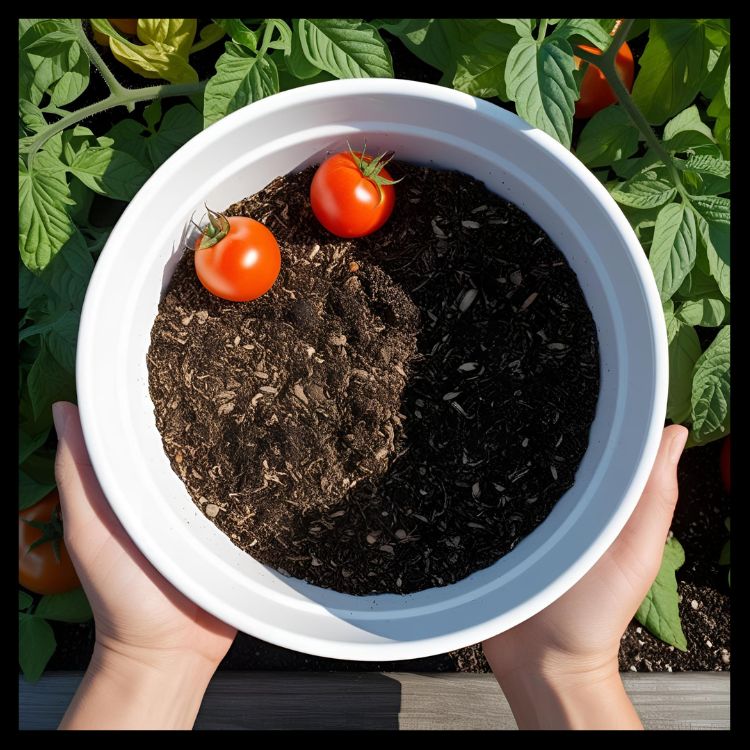
Money-Saving Magic: Growing Your Own Tomatoes
Why grow your own tomatoes? Besides the unbeatable taste, it’s a money-saver. A packet of tomato seeds costs £2-£4 and can grow 10-20 plants. Each plant can produce 2-5kg of tomatoes.
At supermarket prices (£2-£3 per kg), that’s £40-£150 worth of tomatoes from one packet! Even if you buy seedlings (£1-£2 each), you’re still way ahead.
Plus, your compost setup saves you from buying pricey fertilizers or soil mixes.
Real-World Example: Last summer, I grew 12 plants from a £3 seed packet. I harvested about 30kg of tomatoes—worth over £60 at the shop.
My compost cost me nothing after the initial bin purchase. That’s serious savings!
Benefits of Composting for Tomatoes
- Healthier Plants: Compost feeds tomatoes steadily, so they grow strong without chemical overload.
- Eco-Win: You’re recycling waste, cutting down on landfill, and helping the planet.
- Tastier Tomatoes: Homegrown, compost-fed tomatoes have that sweet, fresh flavor you can’t buy.
- Kid-Friendly: Composting is a fun way to teach young ones about nature and science.
Who’s This For?
Making compost is perfect for:
- Families: Kids love getting involved, and it’s a great way to teach them about growing food.
- Beginners: No green thumb needed—just follow the steps, and you’ll be a compost pro.
- Budget Gardeners: If you want cheap, organic tomatoes, this is your ticket.
- Eco-Warriors: Composting cuts waste and keeps your garden chemical-free.
How Easy Is It? Super easy! If you can toss scraps in a bin and stir now and then, you’ve got this. It’s less work than mowing the lawn, and the payoff is way tastier.
10 FAQs About How to Make the Best Compost for Tomatoes
- Can I use only kitchen scraps for compost?
You need browns like leaves or cardboard too. All greens make it slimy and smelly. - How long does compost take to be ready?
About 2-3 months with regular turning, but it depends on weather and mix. - Can I compost tomato plants?
Yes, but remove any diseased bits first to avoid spreading problems. - What if my compost smells bad?
Add more browns and turn it to let air in. It should smell earthy, not rotten. - Do I need a fancy bin?
Nope, a pile works, but bins like the Compost Charm 300L keep it neat. - Can kids help with composting?
Totally! They can toss in scraps or turn the pile—it’s like a science project. - What’s the best compost mix for pots?
Half compost, half potting soil for great drainage and nutrients. - How much compost do I need for tomatoes?
A few handfuls per plant in the ground or 1-2 liters per pot. - Can I buy compost instead?
Sure, but homemade is cheaper and lets you tweak it for tomatoes. - Will compost attract pests?
Not if you avoid meat or dairy and cover food scraps with browns.

Final Thoughts
Learning how to make the best compost for tomatoes is like unlocking a superpower for your garden. With a bit of effort and some everyday scraps, you can create a nutrient-packed paradise for your plants.
It’s cheap, fun, and gives you tomatoes that taste like summer. Whether you’re a newbie or a seasoned gardener, composting is a game-changer.
Grab a bin, start tossing in those peels, and watch your tomatoes thrive. Happy gardening!



